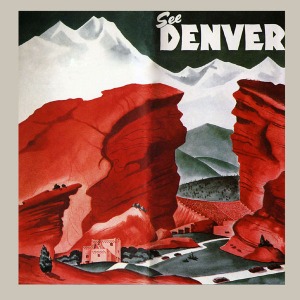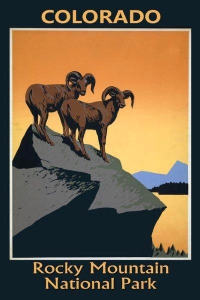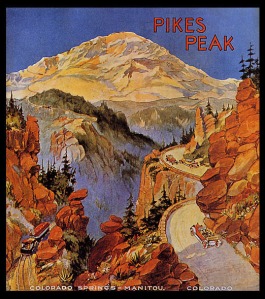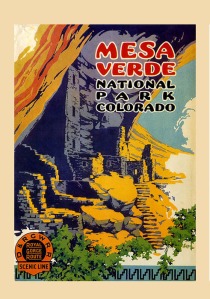To find out what is timeless about a place, look no farther than its vintage tourism campaigns. It’s always fun to see how landmarks were portrayed in graphics from the early days of leisure travel. What has changed? What has stayed the same? Here’s a collection of throwback travel imagery from colorful Colorado’s best-loved attractions, plus some facts from then and now.

Denver - Red Rocks Amphitheater Then: The red boulder walls of today’s Red Rocks Amphitheater were discovered for their naturally brilliant acoustics in the early 1900s. Denver acquired the space in 1928, construction of the theater began in 1936, and it opened to the public in 1941. Music giants like The Beatles, U2 and the Grateful Dead have given legendary shows here. Now: In 2012, mega-popular folk rock artists Mumford and Sons chose Red Rocks to film their official video for the song “I Will Wait.” In 2013, Rolling Stone Magazine named Red Rocks the best outdoor amphitheater in the United States.


Pikes Peak Then: In 1893, Katharine Lee Bates wrote the song “America the Beautiful” after having been inspired by the view from on top of Pikes Peak. A plaque on the summit still commemorates her words. In 1915, Pikes Peak Highway was constructed, making it one of only two Colorado peaks above 14,000 feet that can be reached by car. Now: Portions of the Pikes Peak Highway were closed to visitors on Sept 5 - 6 of 2013 for the filming of Fast and the Furious 7.

Mesa Verde National Park Then: Mesa Verde is home to stunningly well-preserved cliff dwellings of the Anasazi Indians, built between 900 and 1300 A.D. Theodore Roosevelt declared the area a national park in 1906 (the first and only cultural national park in the United States). In 1978 it was named a UNESCO World Heritage Site. Now: This fall 2013, rangers of Mesa Verde will be opening up parts of the park to back country hiking for the first time. They’ll be leading challenging excursions to Upper Navajo Canyon, Wetherill Mesa, and Spring House.

